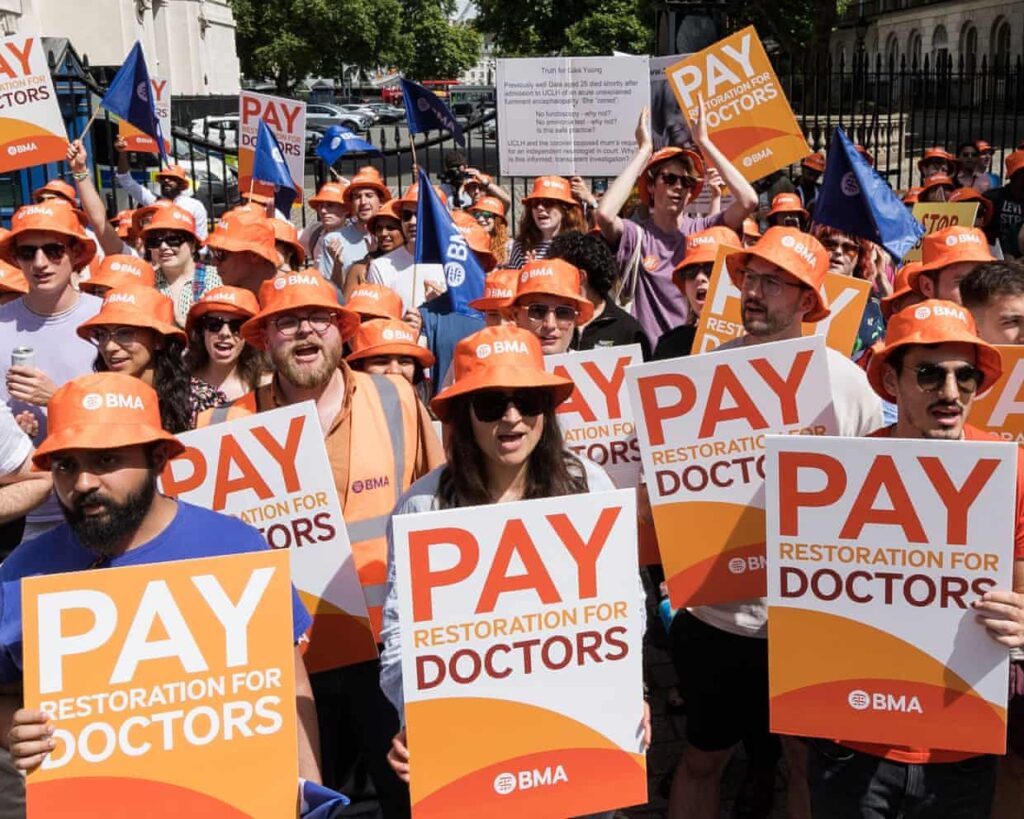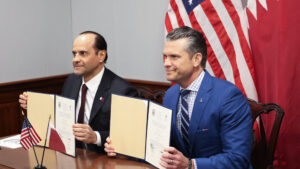
The National Health Service (NHS) is on the brink of a significant setback as junior doctors voted overwhelmingly to strike, jeopardizing recent progress in reducing waiting lists and improving patient satisfaction. The British Medical Association (BMA) announced that over 90% of resident doctors voted in favor of the walkout scheduled for July 25-30, 2024. This decision comes just as the NHS reported its lowest waiting list total in two years, with approximately 7.36 million patients still awaiting treatment.
Recent data showed that while waiting lists are declining, with the highest number of treatments recorded, 40% of patients still wait longer than 18 weeks for care. In a positive development, patient satisfaction with general practitioners (GPs) has also improved, with 70% of respondents expressing satisfaction with access to their GP services. The increase in the number of GPs and enhanced appointment booking systems via phone and the NHS app have contributed to this satisfaction.
In contrast, the impending strike poses a significant threat to the NHS’s recovery. The BMA’s decision to announce strike action with just two weeks’ notice has raised concerns about the impact on patient care, with thousands of appointments expected to be canceled. Previous disruptions have led to the loss of approximately 1.3 million healthcare appointments and a financial impact of around £1.5 billion on the NHS.
Despite the BMA’s push for a new pay agreement, the timing and scale of the strike may complicate negotiations. Health Secretary Wes Streeting recently settled with resident doctors, agreeing to a 22.3% pay increase over two years, leading to an average increase of 28.9% in salaries. This arrangement has raised questions over the BMA’s current demand for a 29% raise, which it claims is necessary to address cuts to real-terms pay since 2008. The BMA’s methodology for calculating pay losses is disputed, contrasting its use of the retail prices index (RPI) with the consumer price index (CPI) adopted by the Office for National Statistics (ONS).
Public sentiment regarding the strike appears mixed. A recent YouGov poll indicated that 48% of the public oppose further strike action, while 39% support it. Many doctors reportedly have reservations about the strike but may hesitate to voice their concerns publicly due to the backlash on social media.
The ongoing challenges within the NHS are compounded by a bottleneck in training positions, with around 20,000 resident doctors facing limited opportunities. Streeting has proposed reforms to prioritize UK-trained doctors in training posts and has initiated plans to create nearly 2,000 additional GP positions to ease the pressure.
As the BMA prepares for the strike, it faces the challenge of balancing its demands with the current economic climate. The NHS, already absorbing 40% of departmental spending, may struggle to accommodate further wage increases without additional funding sources. The BMA’s recent rhetoric, describing government offers as “derisory” and “insulting,” may alienate potential allies in other unions and complicate negotiations.
The potential strike by junior doctors could hinder the NHS’s recovery efforts, with many fearing that the improvements made in recent months may be undone. As public support for the NHS remains strong, the outcome of these negotiations and the strike’s impact on patient care will be closely monitored. The ongoing struggle to balance fair compensation for healthcare professionals with the financial realities facing the NHS underscores the complexity of the current healthcare landscape in the UK.







